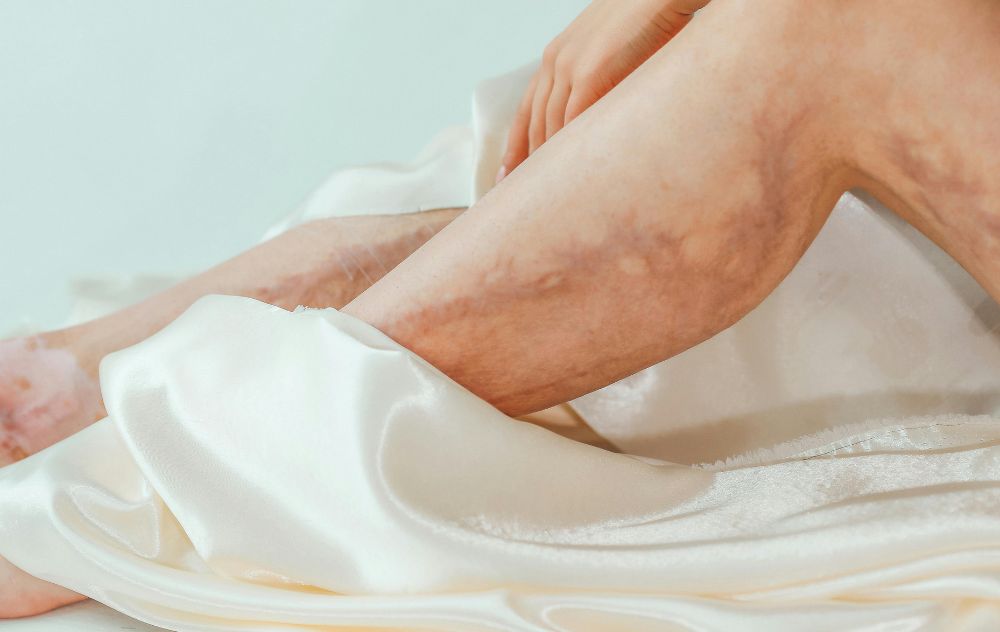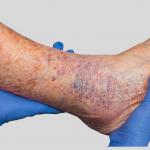
Have you noticed vein discoloration on your legs or ankles? This may appear as dark patches, reddish stains, or skin that looks bruised but never heals. While it may seem like only a cosmetic issue, vein discoloration is often a warning sign of underlying vein disease.
What Is Vein Discoloration?
Vein discoloration happens when poor circulation causes blood to pool in the veins, a condition known as chronic venous insufficiency (CVI). When the tiny valves inside the veins weaken, blood flows backward and builds up, creating extra pressure. Over time, red blood cells can leak into surrounding tissue, leaving behind pigments that change the color of your skin.
Common Signs of Vein Discoloration
Vein discoloration may look different depending on its severity. Some of the most common changes include:
-
Reddish or purplish patches around the ankles or calves
-
Brown skin stains (hemosiderin deposits) caused by iron from leaking blood cells
-
Visible blue or purple veins showing through the skin
-
Thickened, hardened skin (lipodermatosclerosis) in more advanced cases
Symptoms That Often Accompany Vein Discoloration
Skin discoloration rarely appears alone. It is often linked to other signs of vein disease, such as:
-
Leg pain, aching, or heaviness
-
Swelling in the lower legs or ankles
-
Burning, itching, or tingling sensations
-
Open sores that don’t heal (venous ulcers)
If you’re experiencing several of these symptoms along with vein discoloration, it’s time to get evaluated by a vein specialist.
What Vein Discoloration Means for Your Health
While many people see vein discoloration as a cosmetic concern, it’s usually a signal of poor circulation and progressing vein disease. If left untreated, it can worsen over time and increase your risk of serious complications, including venous ulcers and infections.
Treatment Options for Vein Discoloration
The good news is that modern vein treatments are safe, effective, and minimally invasive. Depending on your diagnosis, a vein specialist may recommend:
-
Compression stockings to improve circulation and reduce swelling
-
Endovenous Laser Therapy (EVLT) or Radiofrequency Ablation (RFA): Procedures that seal off diseased veins and redirect blood flow
-
Sclerotherapy for spider veins and smaller varicose veins contributing to discoloration
-
Lifestyle changes such as regular exercise, weight management, and elevating your legs
When to See a Doctor
If you notice persistent vein discoloration or changes in the skin around your legs or ankles, don’t ignore it. Early treatment can improve blood flow, reduce symptoms, and prevent long-term complications—while also restoring the appearance of your legs.
Final Thoughts
Vein discoloration is more than just a change in skin tone—it’s often a visible sign that your veins aren’t functioning properly. By seeking care early, you can protect your circulation, relieve discomfort, and prevent your vein condition from getting worse.





